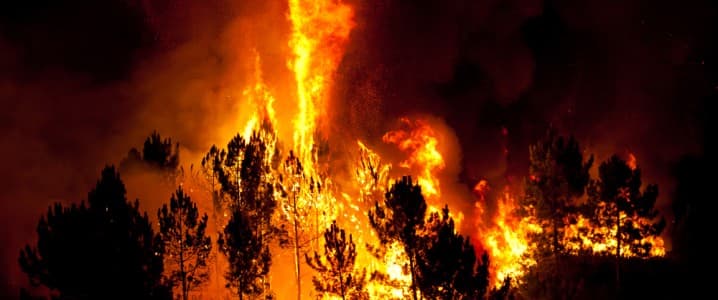Oil production from Canada’s oil heartland, Alberta, slumped to a two-year low in May as wildfires in the province and maintenance on some oil sands operations dragged oil output to a two-year low.
Alberta produced on average 3.61 million barrels per day (bpd) of crude oil in May, according to provincial data cited by Bloomberg. Output plunged by 397,000 bpd from April, and stood at the lowest level since May 202
Production at oil sands projects plummeted by 384,000 bpd, to the lowest level seen in over four years, according to the data.
This year, Alberta faced one of its worst early-season wildfire crises in recent memory, with industry officials confirming in early June that over 50% of the province’s oil production has been forced offline as flames swept through critical infrastructure zones.
Seven key oil producers scaled back or halted operations entirely for days between late May and early June. The fires triggered evacuations in production hubs including Fort McMurray, echoing the catastrophic 2016 wildfires that paralyzed Canada’s energy heartland.
Canada’s top producing companies, including Cenovus Energy, Canadian Natural Resources, and MEG Energy, halted production and evacuated workers from northeastern Alberta as wildfires continued to spread across the region, disrupting operations and threatening infrastructure.
“This is an operational nightmare,” said Rory Johnston, founder of Commodity Context, in a note cited by Bloomberg in early June.
“The timing—just as global crude inventories are tightening—adds serious bullish pressure to markets.” He added that the market may underestimate the “structural fragility” of Alberta’s wildfire preparedness.
As a result of low production in Alberta, the price of heavy crude has strengthened relative to the U.S. benchmark WTI Crude.
Western Canadian Select (WCS), the benchmark for Canada’s heavy crude for delivery in Hardisty, Alberta, saw its discount to WTI Crude narrow to less than $10 per barrel at the end of June, compared to an average of $15 a barrel discount in the past five years.
By Tsvetana Paraskova for Oilprice.com
More Top Reads From Oilprice.com:

